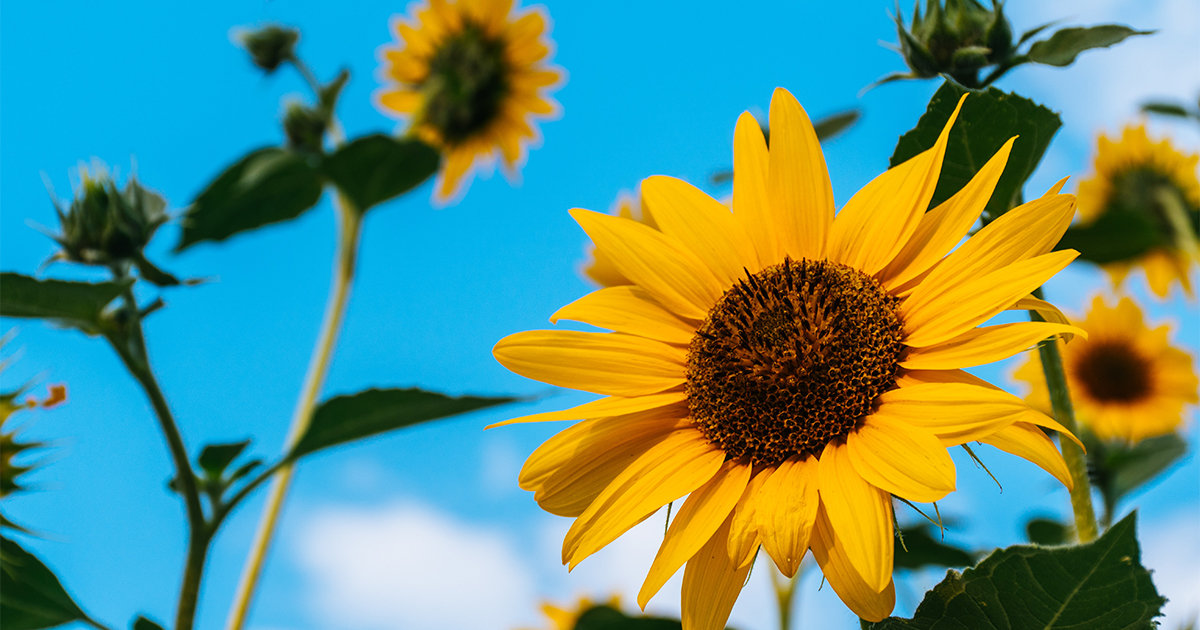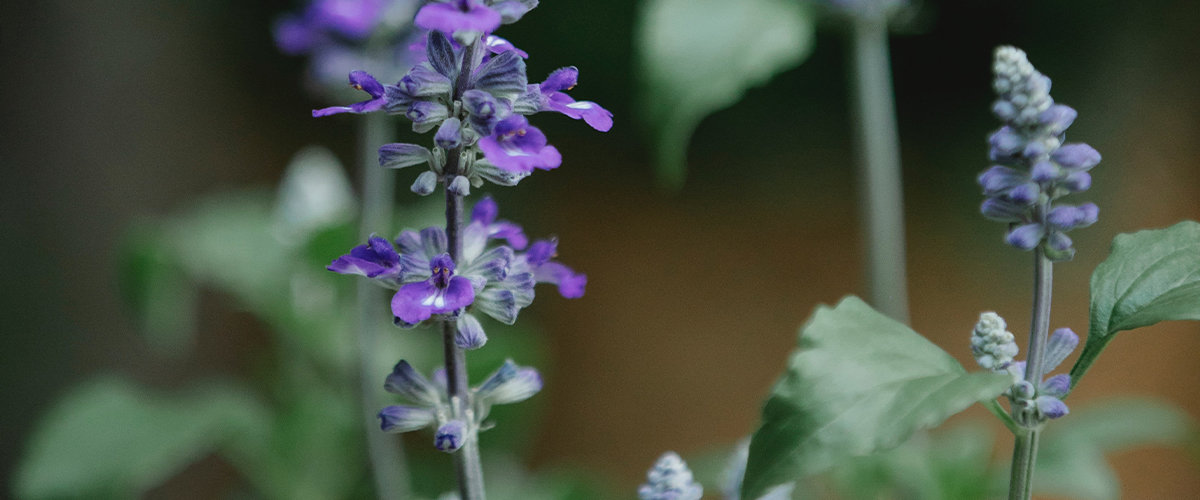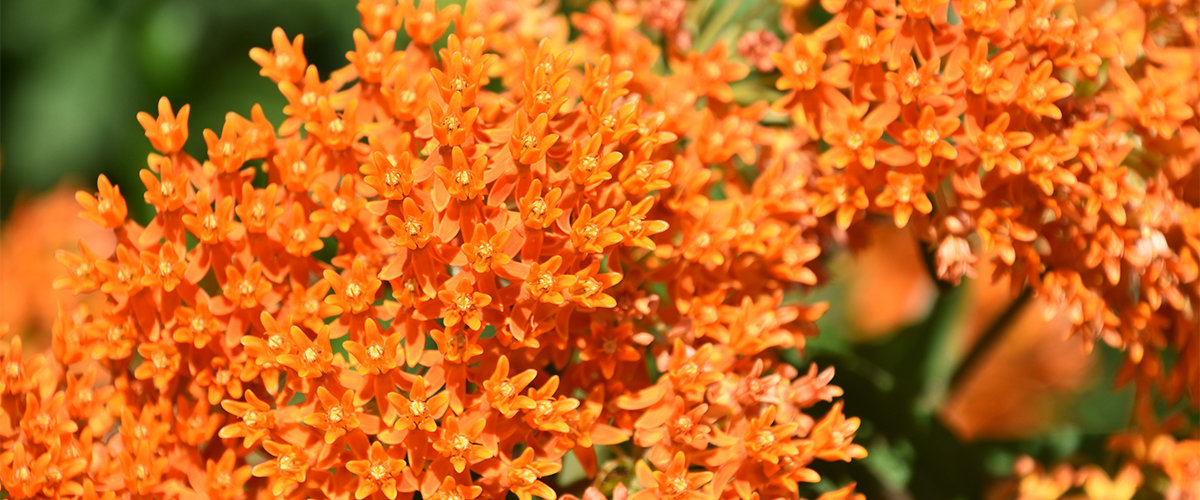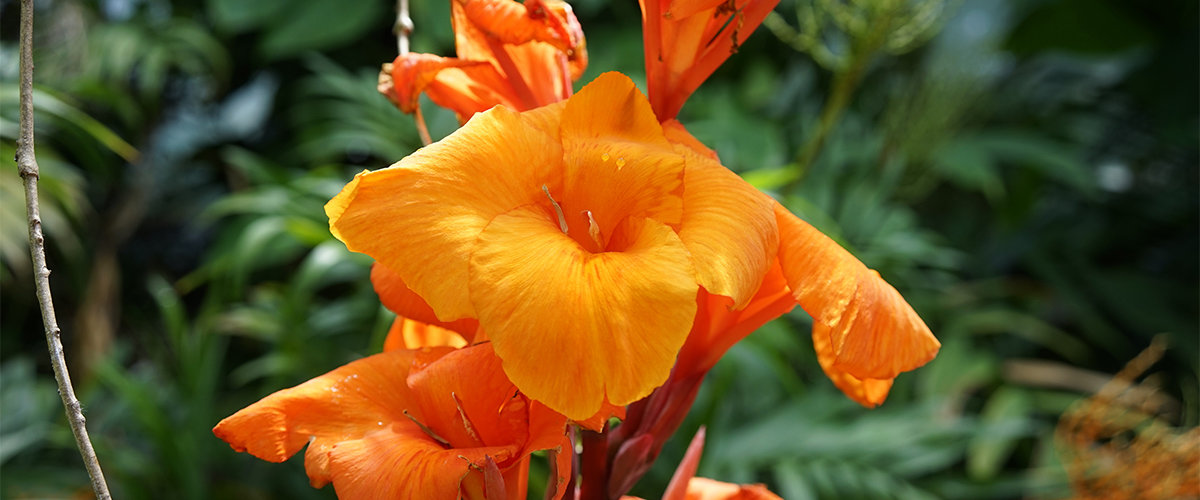
We collect basic website visitor information on this website and store it in cookies. We also utilize Google Analytics to track page view information to assist us in improving our website.
Spring Season starting to book up. Promotions Available for Winter.

Gardening doesn’t have to be a struggle. Try planting easy-to-grow flowers in your backyard that are patio compatible and won’t cause you too much hassle. After all, gardens should be a place for you to relax.
Even if you don’t consider yourself to be blessed with a green thumb, that doesn’t mean you can’t grow beautiful flowers that you can enjoy in your outdoor space. From light and water needs to pesky pests, gardening can be a tricky hobby to master.
Instead of choosing fussy flowers that require delicate care, opt for some of the can’t-kill options below.
Even though they can reach up to 16 feet tall–don’t be fooled by their size.
Sunflowers are an annual that’s easy to grow. Most sunflower varieties are heat and drought-tolerant and do best in full sunlight. They do well in almost all soil varieties, except for wet, water-logged soil.
Sunflowers bloom during the summer, towards the end of the growing season. Although their blooms only last a few weeks, their vibrant blooms are perfect for attracting local pollinators like bees, insects, and birds.
Coneflowers are perennial flowers, that most commonly grow in purple, but also have white, yellow, orange, and pink varieties. These flowers need rich, well-draining soil, however, they are drought-tolerant and thrive in bright sunlight.
Blooming for months, coneflowers are a fragrant addition to your garden and an excellent choice for a cut flower bouquet.
Marigolds are annual flowers that are one of the few options that grow during spring, summer, and fall.
They’re a great addition to vegetable gardens as a companion plant and their distinct fragrance will keep annoying pests like mosquitos at bay.
Plant them in well-draining soil, with full sunlight and regular waterings, allowing the soil to dry out in between.
Cosmos can grow tall, and come in a variety of different colours.
Another garden option that blooms throughout spring, summer, and fall. Make sure to allow the soil to dry out between waterings, and to water the petals as well.
Although they start small, zinnias are annual flowers that grow rapidly and spread out into beautiful blooms.
They need to be grown in full sunlight and require frequent watering.
A popular annual flower, morning glories can reach up to 15 feet tall, blooming in the late summer and into the early fall.
Morning glories commonly self-sow, so be mindful of where you decide to plant them. You will need to give them a wall or trellis for them to grow up.
They do the best in full sunlight, watering weekly during dry periods.
These tall perennials can grow for years, making them an excellent addition to any garden.
After time, you can split and divide them amongst your garden to add more bright pops of colour to your outdoor space. These flowers love sun and can do well in almost any kind of soil.
Plant daffodil bulbs in the fall and just wait until the spring.

Your garden will be bursting with gorgeous colour and sweet smelling blooms.
An ornamental relative to catnip, this variety is far less likely to attract unwanted felines to your garden with its unscented leaves.
A perennial herb has beautiful lavender-blue flowers that bees and birds enjoy. Catmint is drought and heat-tolerant, and will thrive in full sun or part shade. Be careful though, catmint grows so easily that it can invade into other areas of your garden.
Pansies are charming little flowers that add colour to your garden during the cooler months in the spring and fall.
Undemanding and easy to please, give pansies sun and well-draining soil.
Impatiens need a shady spot and water to prevent them from wilting.
These simple annuals can succumb to downy mildew. However, there are new varieties that are resistant to this deadly disease.
Begonias are the ultimate can’t kill flower for the summer months.
They’re perfect for garden beds, hanging baskets or planters. Provide them with sun or shade and begonias will thank you with vibrant colour.
Pretty and ideal for butterflies, these flowers are tough and stand up well harsher weather in the spring and fall.
Incredibly low-maintenance and easy to care for, geraniums can grow well in window boxes, planters, pots, or gardens.
These flowers will give you bright blooms from spring until the first fall frost.
Calendulas can help lure aphids away from vegetable plants, so be sure to grow extra if you plan on using them as insect traps.
They tolerate heat and full to part sun.
Hummingbirds and other backyard pollinators absolutely love salvia.

After they’ve been established in your garden, they’re more forgiving if you forget to water them every once in awhile.
Yarrow is incredibly easy to grow in full sun in the summer and fall.
Yarrow can thrive in average to even poor soil as long as it has dcent drainage.
Lavender isn’t fussy as long as it gets full sun and well-draining soil.
Cut bundles of lavender are great to dry and use for lavender sachets–which can be used for keeping laundry smelling sweet, repelling insects, and promoting a restful sleep.
Columbines are great for hummingbirds and are pretty flowers for any garden.
They will do well in sun or light shade during the early summer.
Phlox are gorgeous little flowers with a signature scent.
They will bloom in the late summer, and can easily take full sun.
These dainty climbing blossoms are available in a large range of colours and boast a delightful scent.
Sweet peas thrive in full sun and need weekly watering.
Lupines are unique perennials that are a popular pick for avid gardeners.
They can do well in full sun or light shade, and prefer moist, well-draining soil.
These flowers grow very, very easily.
Simply sprinkle some seeds in the soil, and they will take root. Spider flowers grow well in full sun and partial shade.
Butterfly weed can grow in any soil and does not need a lot of water in order to thrive.

These orange little flowers live up to their name and attract butterflies, along with other pollinators.
Doing well in high-heat and dry conditions, the moss rose sports succulent leaves and rose-like blooms.
These flowers do best in hot and humid conditions.
Peonies are beloved flowers for a reason.
Their distinct, large petals may seem delicate, but they are hardy. Provide them full sunlight and well-draining soil and you’ll be able to enjoy their short, but beautiful blooming cycle from late spring to early summer.
Returning every spring and early summer, shasta daisies are terrific for cut flower bouquets and grow two to three feet tall.
They prefer full sun and moist, well-draining soil.
This wildflower is hardy, and although it doesn’t have large, showy flowers, it has subtle, yellow florets that attract pollinators.
Goldenrod will grow in late summer through fall.
If you have a soggy spot in your garden, bee balm might be the answer.
A member of the mint family, bee balm is a dominant flower, but you can pull up any unwanted plants that spread beyond where you want them to.
Violas are fast-growing and self-seeding, which means they will come back year after year.
Along with being sweet additions to your garden, violas are edible flowers that make visually appealing garnishes and ingredients in salads. They bloom primarily in cooler weather, and prefer moist soil and sun.
The clematis has attractive flowering vines that grow best in sunny locations with the soil kept cool.
Make sure the vines have support to grow, like a trellis or a fence.
These tropical beauties do best if you keep the soil moist, but they’re also surprisingly drought tolerant.

These low-growing flowers will spread quickly and carpet the area.
They produce pink, blue, or light blue blooms on arching stems.
These flowers can grow over three feet tall, and attract a large variety of pollinators.
Black-eyed Susans grow best in full sun and need rich, well-draining soil. Another perfect option for cut flower displays, these bright blooms flower from summer to early fall.
Nasturtiums are lovely plants and are ideal for ground cover around vegetable gardens, drawing away aphids and other pests.
They also attract pollinators, are another edible flower variety, and are a good choice for cut-flower gardens as well. Be mindful nasturtiums don’t become too heat stressed and are not over-watered.
Filling your backyard patio with these flower types will be sure to give your space a much-needed burst of colour that’s low-maintenance and tough to kill.

